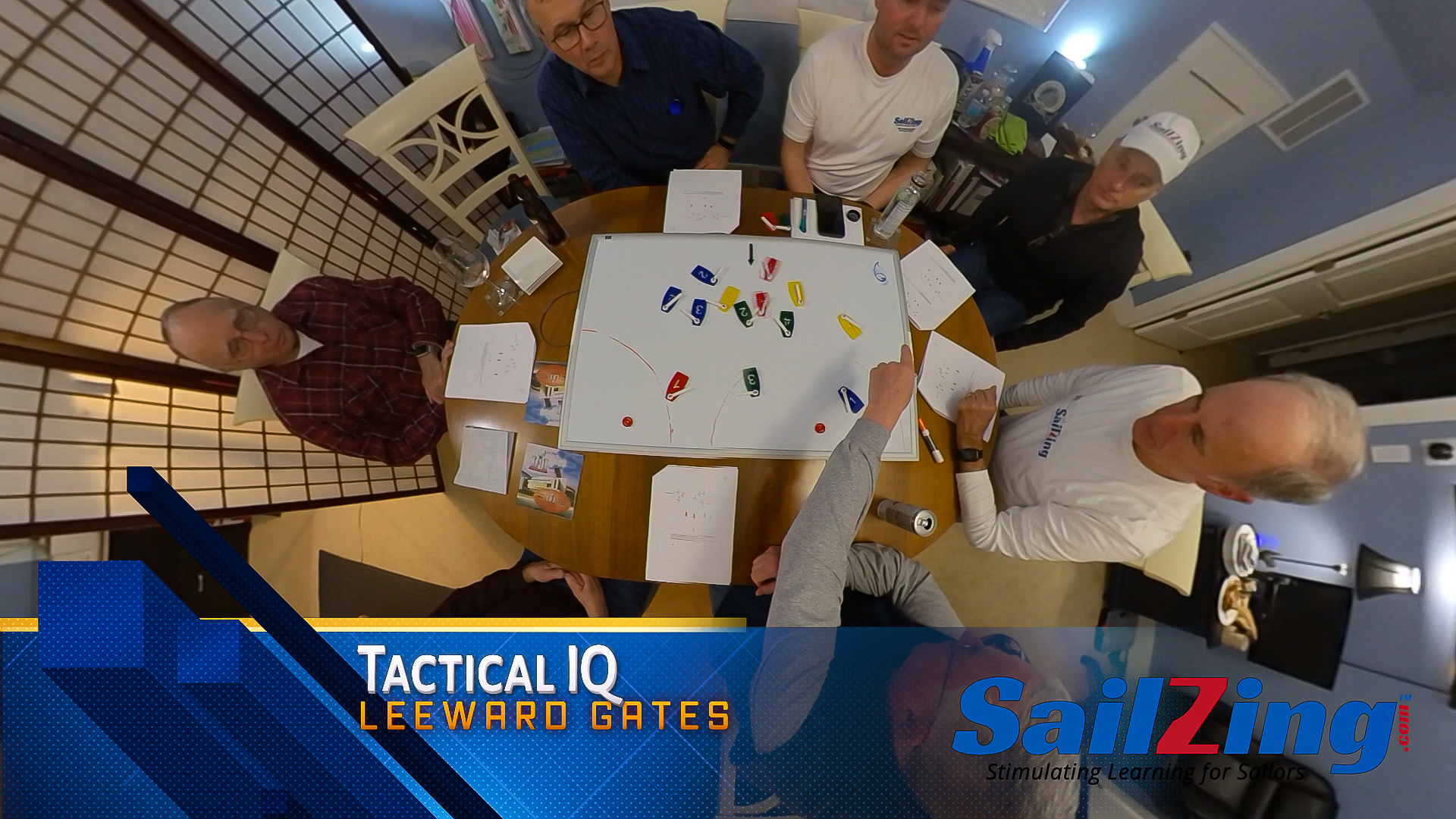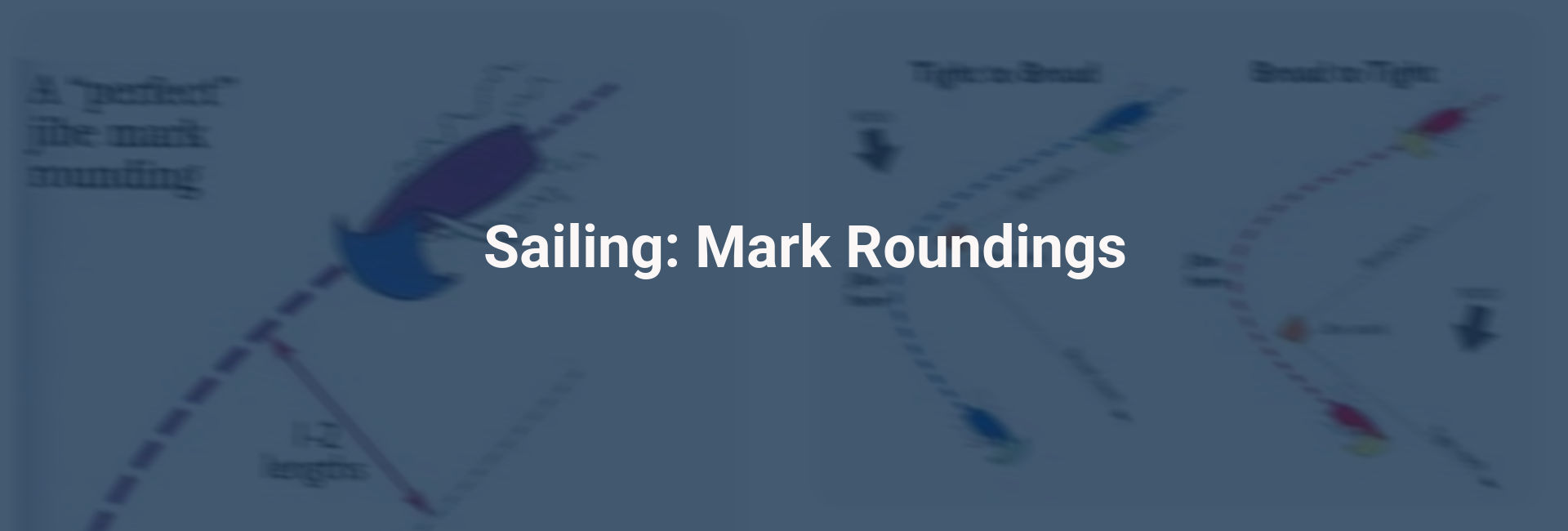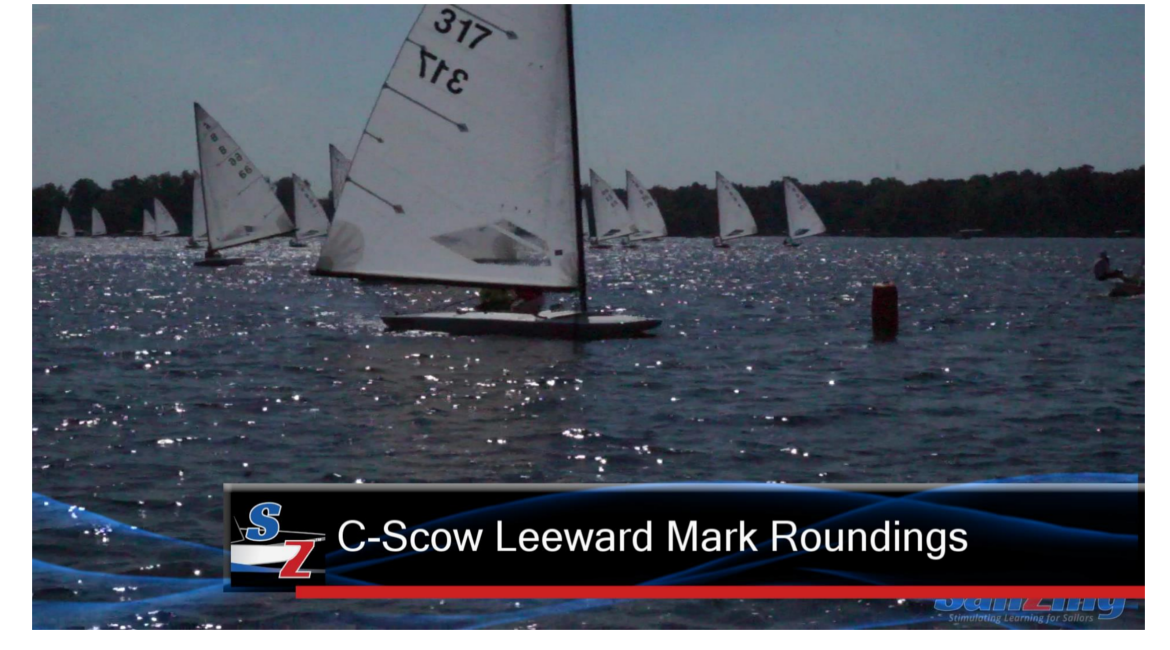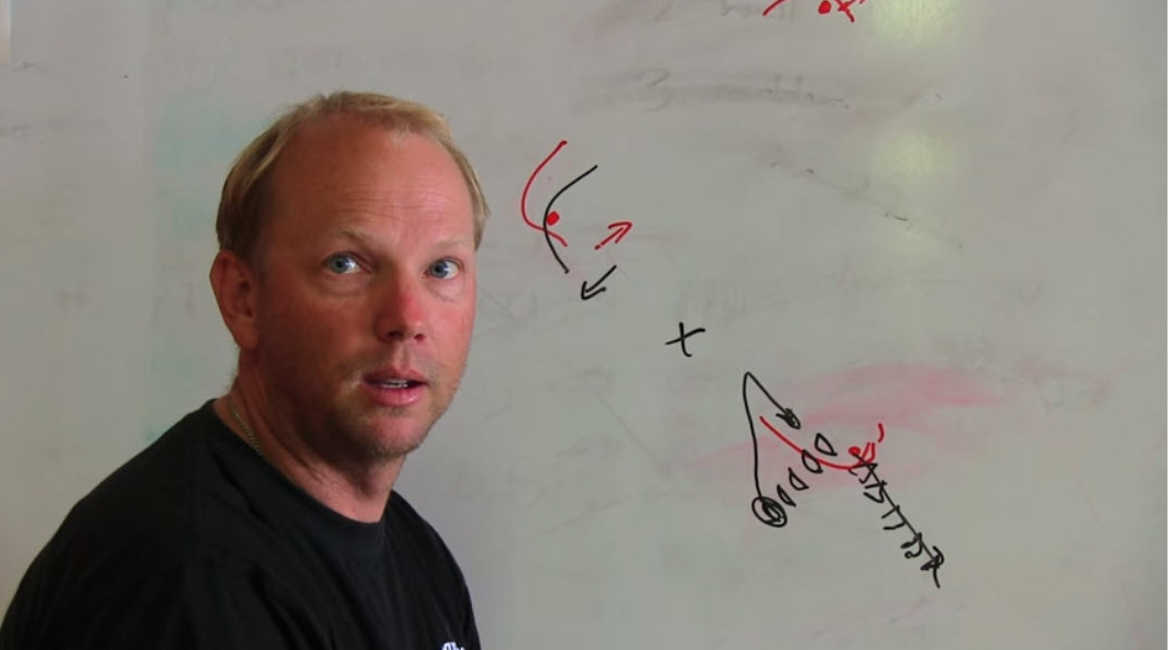SailZing.com is presenting a series of “Tactical IQ” sessions to help you think through common race situations. For this session, we put 8 leeward gate tactics scenarios in front of a group of scow sailors with SailZing’s model boats and recorded the discussion to see what we could learn.
Read each scenario description and decide what you would do. Then watch the video discussion (Video is below) or read the summary of key points. Give us some feedback by commenting below.
Full video:
- SCENARIO 1 – Maintaining Advantage 00:11
- SCENARIO 2 – Protecting the Inside Track 06:14
- SCENARIO 3 – Gaining the Inside Track 11:55
- SCENARIO 4 – Approach Tactics 1 17:47
- SCENARIO 5 – Approach Tactics 2 24:30
- SCENARIO 6 – Leader Tactics 29:10
- SCENARIO 7 – Proper Roundings? 33:17
- SCENARIO 8 – Anticipating Wind Shifts 35:53
Scenario 1 – Maintaining Advantage
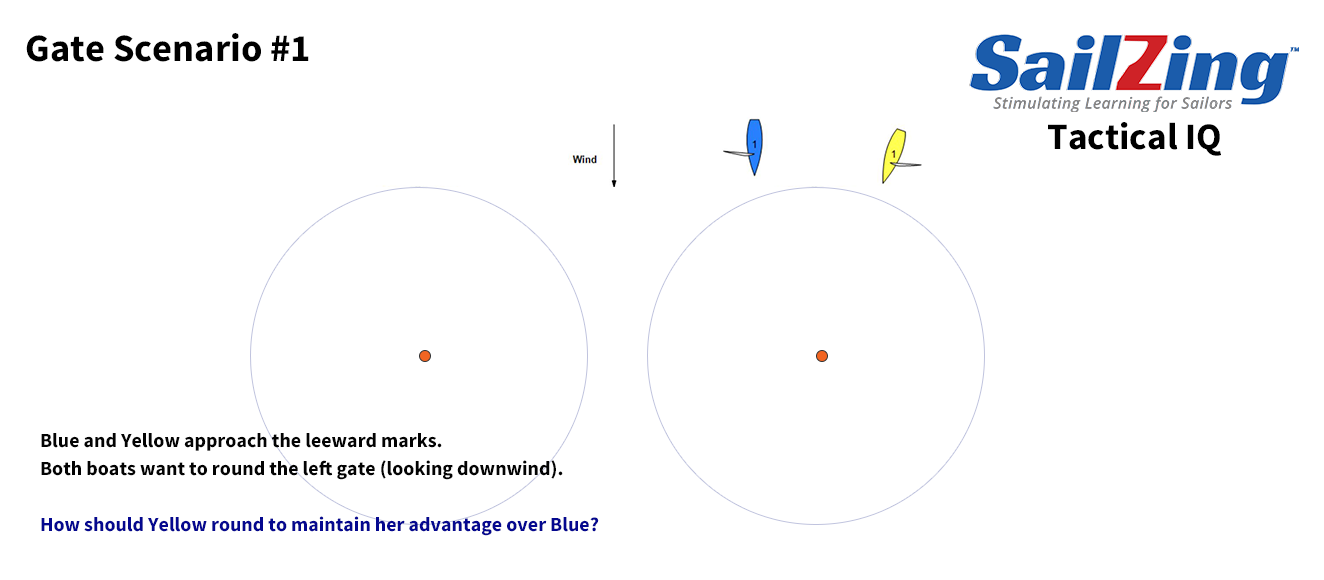
Blue and Yellow approach the leeward marks. Both boats want to round the left gate (looking downwind). How should Yellow round to maintain her advantage over Blue?
Key points from the discussion
Two boats are about to round the left, leeward gate mark and the Yellow boat wants to maintain their advantage over Blue. What would you do?
How should Yellow approach the mark – tight, wide…? What CAN Yellow do within their rights?
Yellow is on starboard (Blue is port) and is permitted to follow their “proper course”, including a gybe and steering wide and then close to the mark. After Yellow gybes, they must comply with Rule 18.
Rules Considerations
Rule 18.1 Mark Room: b. (does not apply) “between boats on opposite tacks when the proper course at the mark for one but not both of them is to tack.” 18.1
Case 75 -Abstract: When rule 18 applies, the rules of Sections A and B apply as well. When an inside overlapped right-of-way boat must gybe at a mark, she is entitled to sail her proper course until she gybes. A starboard-tack boat that changes course does not break rule 16.1 if she gives a port-tack boat adequate space to keep clear and the port-tack boat fails to take advantage of it promptly.
If, conversely, Blue is on starboard and Yellow on port, then best move for Yellow is to gybe and point up Blue to gain space to round earlier.
Scenario 2 – Protecting the Inside Track
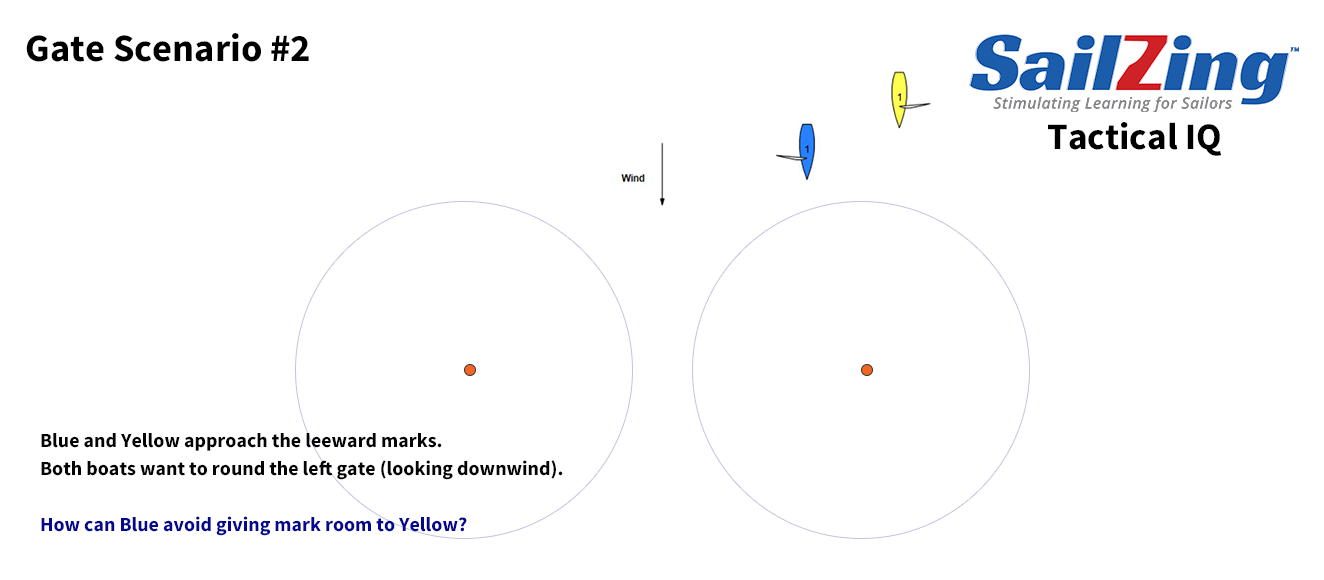
Blue and Yellow approach the leeward marks. Both boats want to round the left gate (looking downwind). How can Blue avoid giving mark room to Yellow?
Key points from the discussion
Blue (port) is either slightly ahead of or barely overlapped with Yellow (starboard). What should Blue do to avoid having to give mark room?
Blue could point up to break the overlap (with risk of slowing down) or gybe, but must watch for Rule 18.2e. TIP: When Blue believes that they are clear of the overlap, they should announce “OVERLAP BROKEN” to Yellow. If Yellow does not disagree, then burden of proof is on Yellow that an overlap existed at the zone.
Rules Considerations
Rule 18.2e: If there is a reasonable doubt that a boat obtained or broke an overlap at the time, it shall be presumed that she did not.
TIP: Is an overlap achieved at point A or Point B? Point B.
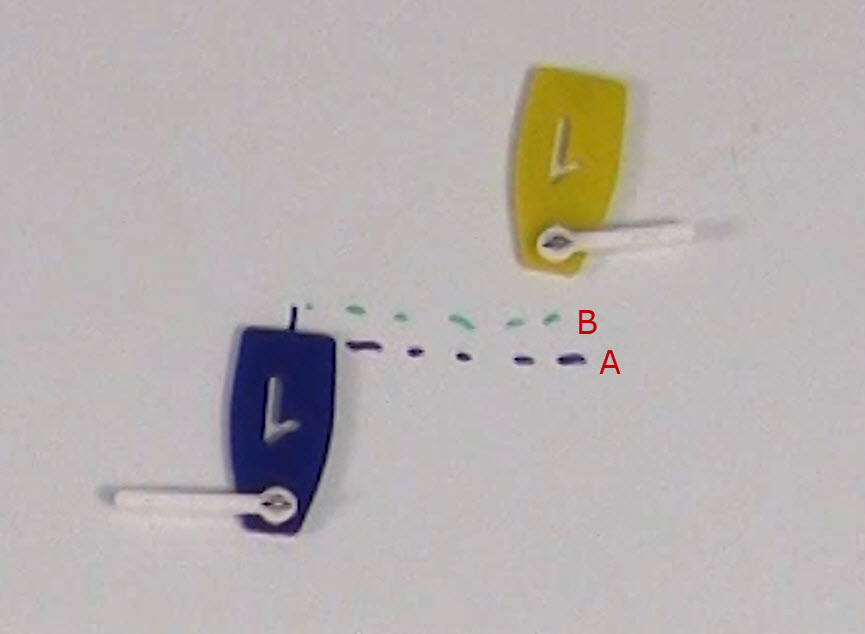
One boat is clear astern of another when her hull and equipment in normal position are behind a line abeam from the aftermost point of the other boat’s hull and equipment in normal position.
Related Content
Racing Rules of Sailing 2021 – 2024: Rule 11 – On the Same Tack, Overlapped
Scenario 3 – Gaining the Inside Track
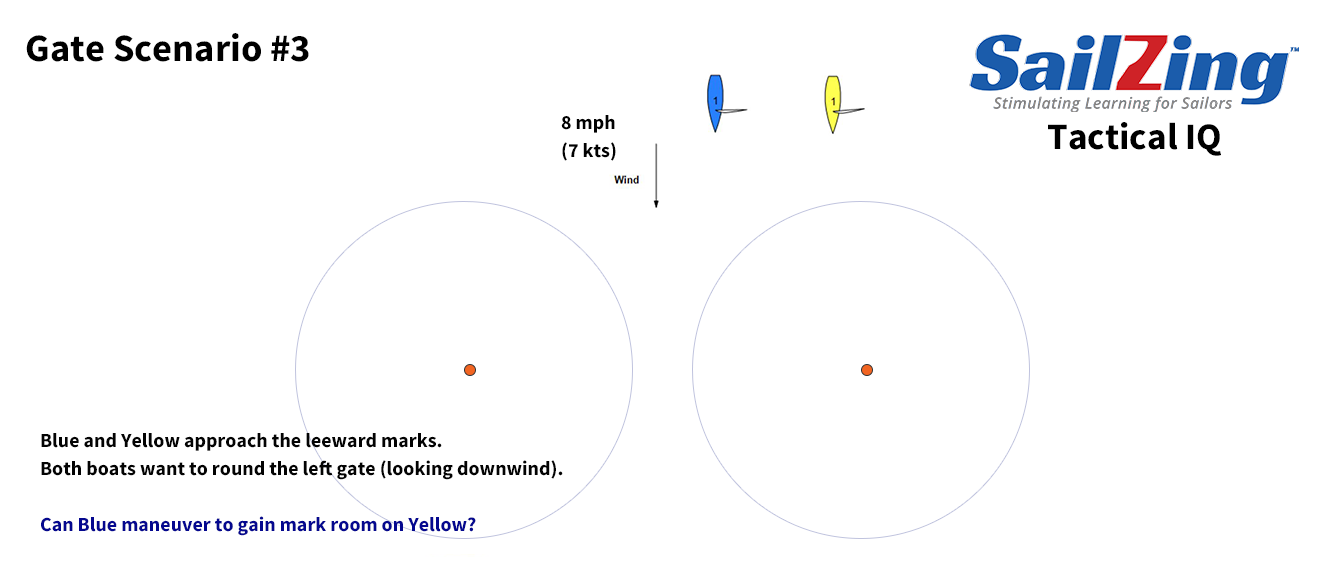
Blue and Yellow approach the leeward marks. Both boats want to round the left gate (looking downwind). Can Blue maneuver to gain mark room on Yellow?
Key points from the discussion
Blue (starboard) and Yellow (starboard) are about even. Blue is outside of Yellow, but wants to get inside of Yellow prior to the zone.
Blue can gybe (with full board down), cross stern and then bear straight downwind carrying speed. Yellow’s defense is to gybe also (with full board down). If the board is not down, speed can be lost and side slipping can occur.
If you’re Yellow and want to discourage this behavior in the future, there are some ideas at 14:50.
Related Content
Bill Draheim, Rush Creek Yacht Club, Dallas, TX, also provided some solid wisdom on leeward gate tactics 00:37:23:00 and downwind tactics (00:49:26:00) in the video referenced here.
Scenario 4 – Approach Tactics 1
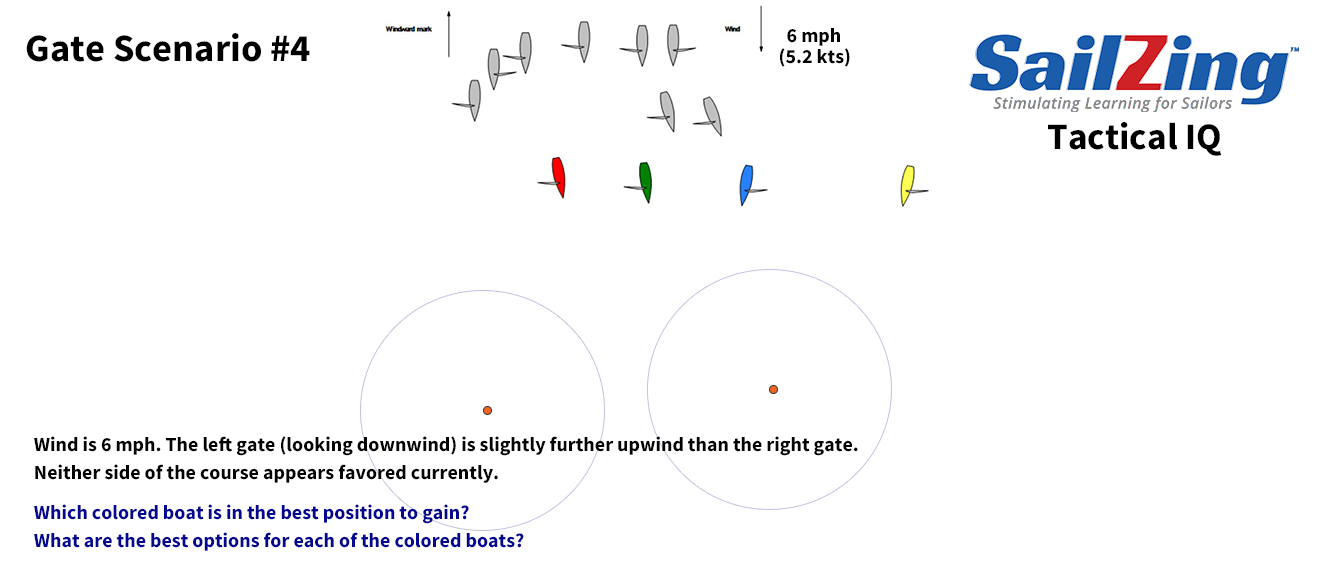
Wind is 6 mph. The left gate (looking downwind) is slightly further upwind than the right gate. Neither side of the course appears favored currently. Which colored boat is in the best position to gain? What are the best options for each of the colored boats?
Key points from the discussion
You’re in a line of boats with a pack of boats behind. What can you do to “avoid the slows“?
Yellow points up to a reach in clear air, speeds up and maintains overlap and mark room.
Blue can gybe and reach to block Yellow with a second gybe if Blue can get enough speed. This is Blue’s best option because even if unsuccessful, Blue merely stays in the overlapped position.
The concept of a leeward layline (line of maximum VMG) beyond which you’ve overstood is discussed at 21:52.
Red should go for the right zone. Green should race for the left mark even thought they will be outside boat. The risk of getting slowed by Red at the right gate and having a crunch of boats to contend with there is too high.
Scenario 5 – Approach Tactics 2
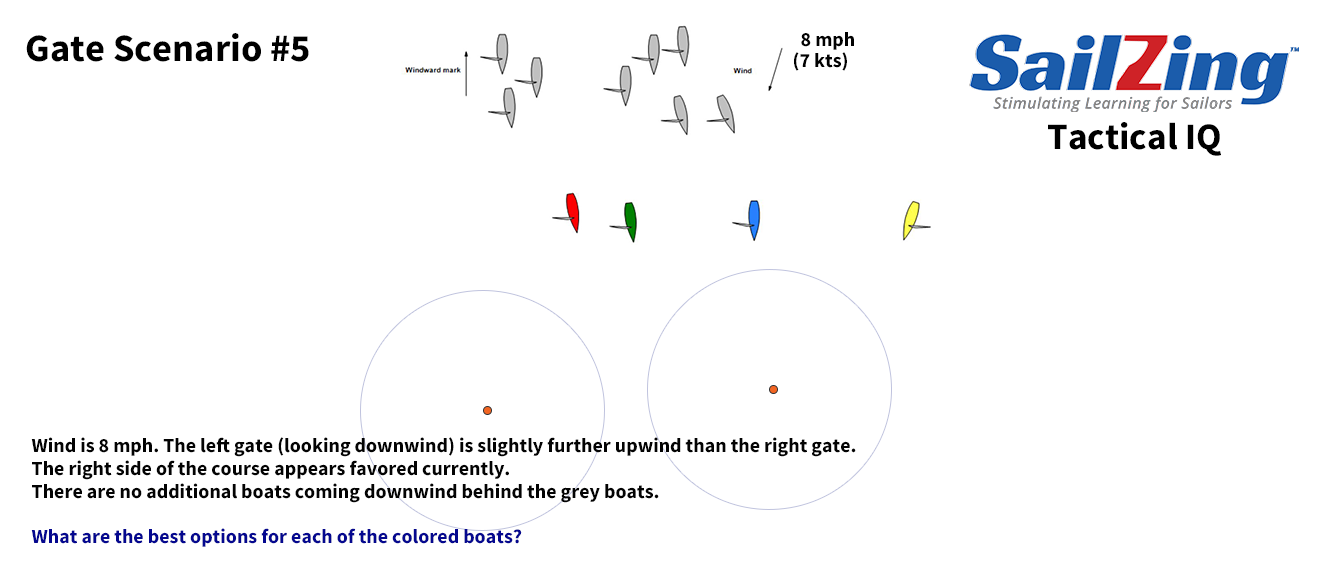
Wind is 8 mph. The left gate (looking downwind) is slightly further upwind than the right gate. The right side of the course appears favored currently. There are no additional boats coming downwind behind the grey boats. What are the best options for each of the colored boats?
Key points from the discussion
Red and Green should beam reach aggressively for the left mark to get out of the shadow of the boats behind and position for the favored side.
There was a lot of discussion of other approaches which all have varying degrees of benefit or penalty. Also, the tactics may differ depending on an oscillating or persistent shift, type of sail package, etc.
Scenario 6 – Leader Tactics
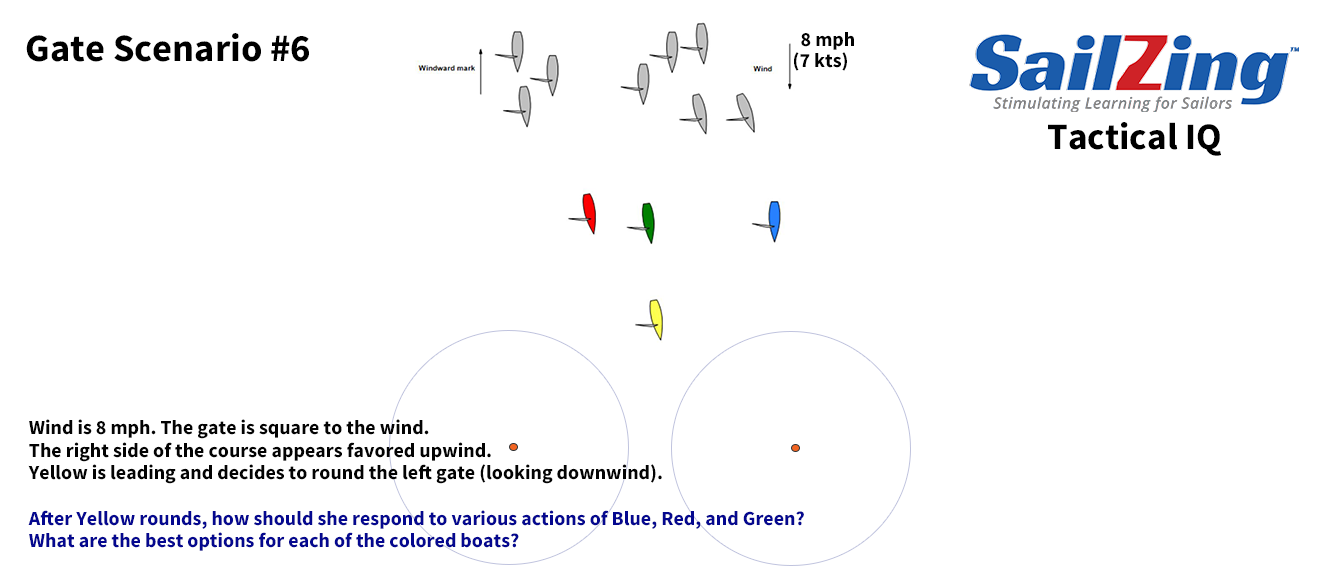
Wind is 8 mph. The gate is square to the wind. The right side of the course appears favored upwind. Yellow is leading and decides to round the left gate (looking downwind) for the last leg to finish. After Yellow rounds, how should she respond to various actions of Blue, Red, and Green? What are the best options for each of the colored boats?
Key points from the discussion
Yellow rounds and then watches for Blue to tack to starboard and then tacks to cover.
One strategy that was referred to as the Buddy Melges drill, suggests that Yellow should round and then tack when even with Blue going downwind, then tack back when Blue rounds the mark. That puts Yellow in a controlling position over Blue. Yellow must have enough of a lead to do this since they will expend two tacks.
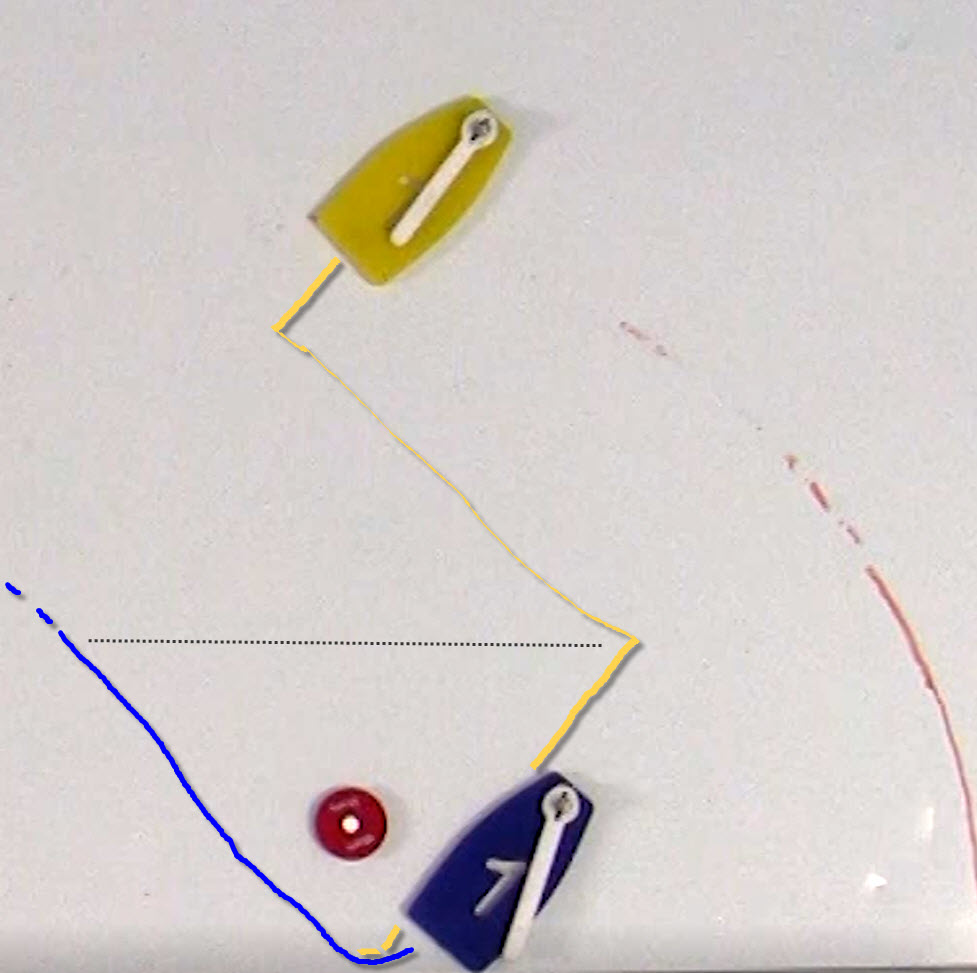
Scenario 7 – Proper Roundings?
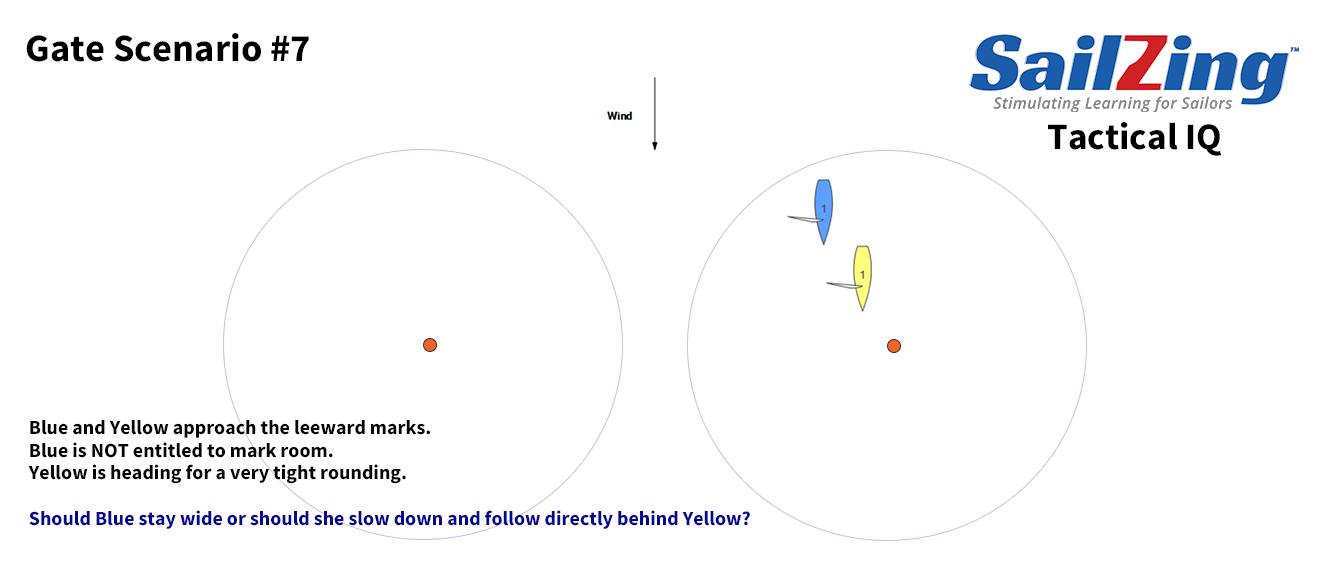
Blue and Yellow approach the leeward marks. Blue is NOT entitled to mark room. Yellow is heading for a very tight rounding. Should Blue stay wide or should she slow down and follow directly behind Yellow?
Key points from the discussion
Blue needs to give Yellow the room to round the mark and Yellow can steer wide. Option 1 is for Blue to try to “fast follow” around the mark and then tack after the mark with speed.
If Blue’s thought is to sail wide and “foot” below Yellow to gain speed to sail out from under Yellow, then Blue probably needs to be “bow ahead” prior to the rounding.
Scenario 8 – Anticipating Wind Shifts
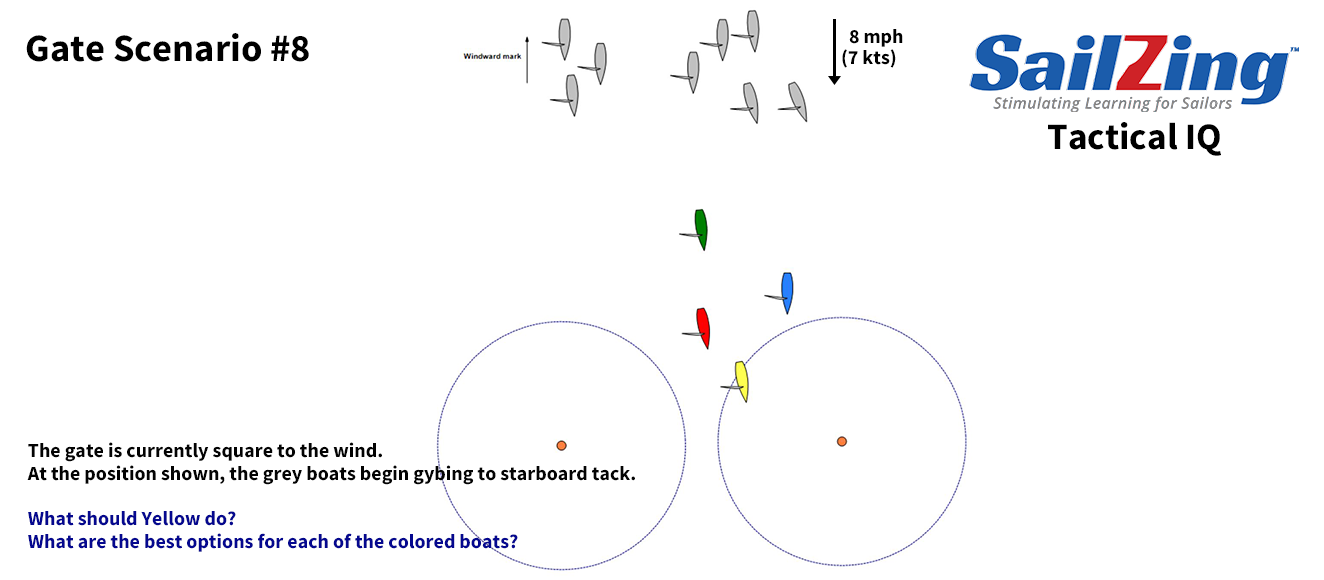
The gate is currently square to the wind. At the position shown, the grey boats begin gybing to starboard tack. What should Yellow do? What are the best options for each of the colored boats?
Key points from the discussion
The point (36:26) was made that the sailors need to know what caused the boats behind to gybe. If a boat above gybed to starboard and forced all the others to gybe unwillingly, then it may not indicate a shift. So watching how things unfold upwind is important.
TIP: Before the boats behind gybed, there was probably a puff that came down and the boats are responding to that. Watch for how they respond to puffs.
Option 1: Yellow can tack and go right mark behind Red.
Option 2: Yellow can continue to the left mark because the shift hasn’t reached them yet. Tack after the mark and hope that the boats behind have carried the puff far enough that Yellow can tack back in the shift.
There is a lot of discussion around why Option 1 is probably the right action.

